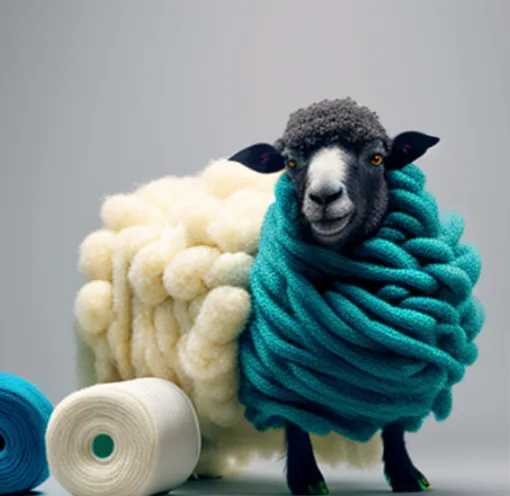Wool is one of the most versatile fabrics available, and its unique properties have been appreciated for centuries. As a result, there is an ever-growing market for wool products that reflects its broad range of uses, including clothing (sweaters, jackets, hats, and socks), carpets, bedding and insulation materials, and much more. In addition to its wide variety of applications, wool has several environmental benefits regarding production and disposal. Let’s take a closer look at how recycling wool impacts the environment, the booming market for wool goods, potential use cases of this fabric, and what organizations like PETA are doing to promote animal welfare in the industry.
Recycling Wool: Regarding production’s environmental impact, wool can be mechanically recycled without releasing pollutants into the atmosphere or landfills. This fact alone provides many advantages over other fabrics like cotton or nylon. Manufacturing new items from used or recycled materials will help reduce emissions and waste created by producing entirely new goods from crude oil-derived sources. Furthermore, no bleaching agents are needed when recycling wool as it doesn’t contain chemicals that could harm our planet’s delicate ecosystems. However, chemical recycling of yarn has been limited due to the complexity of the manufacturing process.
Market Boom & Use Cases: The global wool market is booming with traditional and modern uses. From coats to hats to sweaters — these products always seem to stay in style! As people become more conscious about their environmental footprint, they are increasingly seeking sustainable fashion options such as those made with 100% natural resources like organic cotton or bamboo yarns (which can also be recycled). Additionally, furniture manufacturers have discovered that wool is ideal for upholstery as it retains its shape over long periods — making it a great choice when shopping for furnishings that need longevity and durability.
PETA & Animal Welfare: Organizations such as people for the ethical treatment of animals (PETA) have been very vocal about ensuring animal welfare. For example, sheep farming could be concerning for protecting them from harmful practices associated with raising livestock for wool production. For livestock farmers to receive certification through PETA Approved Vegans Wear label, they must adhere to strict animal welfare guidelines, including proper nutrition plans; adequate protection against predators; ample space; access to clean water; good veterinary care; humane handling of animals during shearing; and specific guidelines related to lambing season amongst others. PETA also aims to save animals by encouraging the development of a vegan wool material that is visually, texturally, and functionally similar to sheep’s wool.
Final Thoughts: As we continue our quest towards creating a more sustainable future, initiatives involving wool — from recycling efforts aimed at reducing landfill waste levels, improving animal welfare standards within farming communities, and providing eco-friendly alternatives to traditional synthetic fabrics — can help us achieve our goals which make perfect sense since something like fabric has been mainstay humanity since earliest days of civilization.

